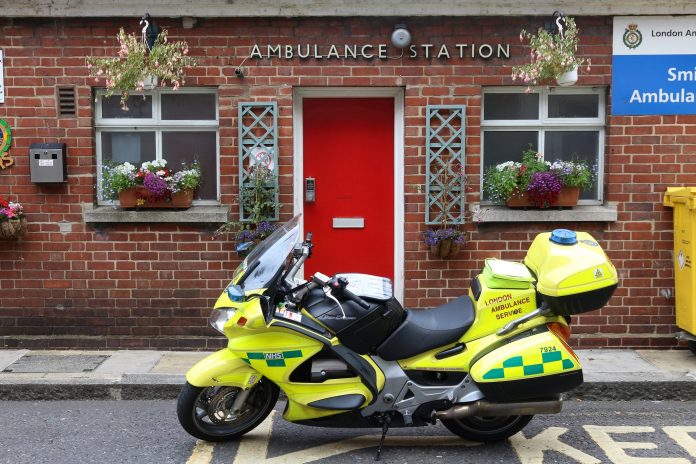Neil Everatt, CEO at Selenity, discusses the need to understand duty of care for NHS drivers
Nearly all employees will need to drive for work purposes at some point. Whether it’s jumping in the car each day or once in a while to attend a meeting or training course. When it comes to business-related travel, employees and their line managers often fail to think twice about the implications of getting behind the wheel – but it’s worth a pause for thought. Especially as the Department for Transport calculates that more than a quarter of all road traffic incidents may involve somebody who is driving on company business.
Under the Health & Safety at Work Act 1974 employers up and down the country have a legal duty of care to protect their employees from the risk of foreseeable injury. The legislation includes employees making work-related journeys, regardless of who owns the vehicle. This is particularly pertinent for the NHS as nurses and social care professionals often drive regularly as part of their job, visiting different sites, care settings and patients.
Trusts rights and responsibilities
The NHS accounts for almost 10 billion journeys each year, that’s around 3.5% of all road travel. With significant mileage costs, the NHS has a responsibility to check that their employees hold a valid driving licence, have insurance that includes business use and vehicles are roadworthy with a current MOT certificate. This requirement is set out in the NHS Agenda for Change, section 17.6 states: “When reimbursing travel costs the employer must ensure that the driver has a valid licence and MOT certificate and has motor insurance which covers business travel.”
Whilst it’s easy for managers to bypass these checks and assume that employees hold all the correct documentation, the consequences are incredibly serious if employees do become involved in accidents when making work-related journeys. A simple oversight will not only put them at risk of a DVLA conviction and a fine but their line manager too. Sills & Betteridge LLP point out that if an employee forgets to update the DVLA when changing address, it’s possible that they could rack up penalty points, licence revocation or even a disqualification without having any knowledge of the offences. While honesty is always the best policy, one based upon self-declaration is risky business.
In fact, Alastair Currie, Partner at law firm, Bevan Brittan echoes this sentiment explaining that: “When it comes to governance of NHS employee drivers, self-regulation by an employee declaration does not entirely mitigate the risks to NHS organisations of vicarious liability for employees’ conduct. Pro-active monitoring of compliance will always be a more effective risk mitigation.”
The bottom line is that failing to take the appropriate steps to ensure roadworthiness, could lead to the NHS being held responsible for any incident that occurs on the road. In the worst cases, this could include imprisonment or large fines of up to £20m for corporate manslaughter.
Effectively meeting duty of care obligations
With managers making up just over 3% of the 1.2 million people employed across the NHS, the manual checking of driving documentation is an enormous task – taking away valuable time from the delivery of frontline services. The process can also be draining on HR and finance teams who often take on the role of enforcing legislative compliance.
Although the DVLA does allow organisations to look-up information on drivers, the process can be time-consuming and is open to human error. The 2017/2018 NHS annual report indicates that administration costs have increased, so it’s important for the NHS to look at employing services, where possible, that are affordable and relieve manual processing. In line with the NHS Agenda for Change, it makes much more sense for organisations to align their duty of care obligations with the claiming of mileage expenses. Implementing an expenses solution with built-in driver compliance not only streamlines process and reduces administrative burden but also ensures that comprehensive checks are carried out.
With an estimated 1.6 million people carrying an out of date photo on their driving licence, it’s important that Trusts check driver information regularly. Whether it’s through a compliance checking service or an expenses solution with duty of care capabilities, a minimum yearly check should be implemented. Streamlining the process in this way provides the NHS with an affordable solution which takes care of everything and provides accurate and auditable checks. On top of this, it’s best practice for NHS organisations to demonstrate that their employees are safe to drive by saving copies of driving licences, MOT certificates, vehicle insurance documentation and service histories.
The NHS undertakes a significant amount of business mileage each year and ensuring that documentation is kept up-to-date is paramount to meeting duty of care obligations. Carrying out driver and vehicle checks ensures that NHS organisations are remaining legally compliant and reduces the risk of actions from the HSE. Ultimately, preventing unsafe vehicles and uninsured drivers from claiming mileage means that they’re less likely to be on the road, which protects the NHS and its drivers as well as safeguarding members of the public.











